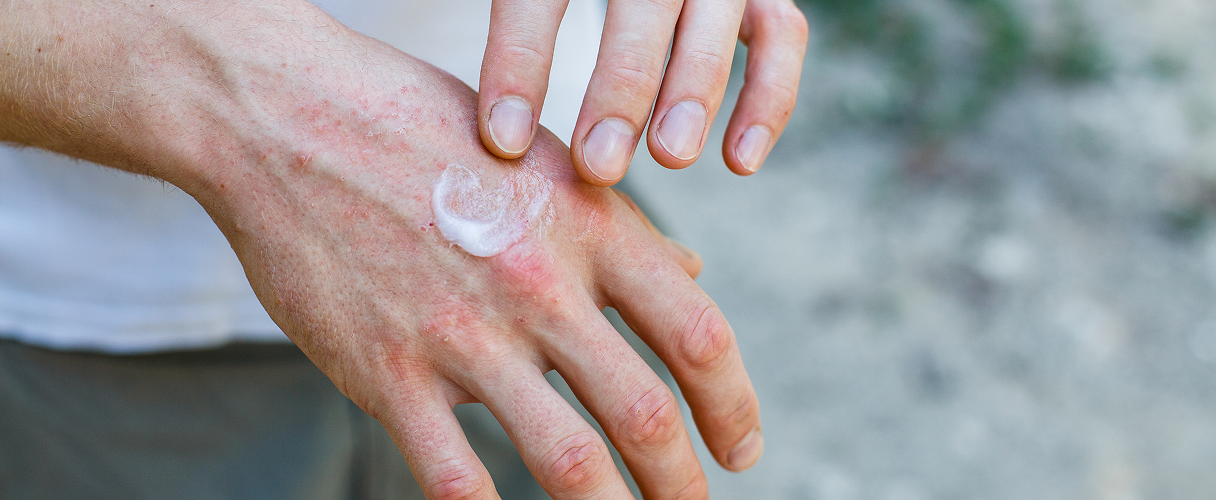Learn about the treatment goals that are most important to patients, including the importance of achieving clear skin, addressing high-impact areas and reducing pain and itching.

Date of preparation: December 2024
Learn about the treatment goals that are most important to patients, including the importance of achieving clear skin, addressing high-impact areas and reducing pain and itching.

Patient treatment goals and the importance of clear skin
Achieving clear skin
One of the primary treatment goals for patients with plaque psoriasis is to rapidly achieve and maintain clear skin.1 In a survey of 500 patients with moderate-to-severe psoriasis in the USA, 90% said they would like to see a rapid treatment response and 94% of the patients wanted to achieve clear skin and maintain it for at least 2–3 years.1

Figure 1: Treatment preferences for patients with moderate-to-severe psoriasis1
Multiple studies reported that increased levels of skin clearance (according to Psoriasis Area and Severity Index score [PASI]) are correlated with improvements in quality of life (Dermatology Life Quality Index 0 or 1), and that failure to achieve or retain complete and lasting skin clearance negatively impacts disease progression and quality of life.1–3
Unfortunately, 57% of the patients being treated for moderate-to-severe plaque psoriasis did not feel that they were achieving clear or almost clear skin.4 What is more, 56% did not believe that clear or almost clear skin is an achievable goal.4

Figure 2: Many patients are unaware of the possibility of achieving clear skin4
Addressing high-impact areas
Achieving clear skin is important to patients, especially when psoriatic lesions are present in high-impact areas, including the scalp, face, nails, genitalia, palms and soles.5 Overall, 92% of the patients have said that treatments effective in these areas were of high importance to them.1
Psoriasis involving high-impact areas is associated with worse quality of life, depression and limitations in the ability to participate in social roles and activities.6
Psoriatic lesions found in these high-impact areas pose unique challenges in terms of treatment satisfaction and management. Current treatment options for these specific types of psoriasis often fall short in providing satisfactory results.7
Reducing pain and itchiness
Living with psoriasis can be challenging as it is not only associated with visible skin symptoms but also with a high degree of physical discomfort. Itchiness occurs in 70–90% of the patients and pain in up to 83% of the patients.8–12 In the survey previously mentioned, 94% of the patients expressed a strong desire for treatments that effectively reduce both pain and itching.1
Pain and itchiness negatively impact the quality of life of patients with psoriasis. Some patients with psoriasis report scratching their skin until it is painful as it is easier to deal with pain than itchiness.13 Itchiness not only leads to physical damage of the skin, but it also negatively affects patients' emotional well-being, relationships, daily activities and sleep.13
However, in a survey of approximately 1,000 patients with psoriasis in the USA, one in three patients reported that their primary goals of therapy, including reducing itching and decreasing flaking, were not met with their current treatment.14
Other articles you might like
You can read more articles that might interest you.
Want to see more articles?
Can’t find the answer you’re looking for? See all the Resources we have.